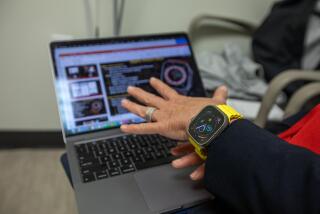Heart Monitor Procedure May Raise Death Risk
- Share via
CHICAGO — A heart monitoring procedure used a million or more times a year in this country to treat critically ill patients may actually be killing some of them, researchers say.
Patients who underwent right heart catheterization had a 21% higher risk of death in the succeeding 30 days, according to figures on 5,735 intensive-care unit patients at five U.S. medical centers.
Right heart catheterization involves inserting a balloon-tipped catheter into a neck vein and guiding it into the heart’s right atrium. The procedure lets doctors measure how the heart is performing and choose the right treatment.
The procedure, in use for 25 years, is a central element of care for critically ill patients who are in shock or whose hearts are functioning abnormally. The annual cost associated with its use is more than $2 billion.
Though some patients might benefit from the procedure, Dr. Alfred F. Connors Jr. of the University of Virginia said his study failed to identify any who did.
“There’s no question that the health establishment should pay attention to that,” said Dr. Claude Lenfant, director of the National Heart, Lung and Blood Institute at the National Institutes of Health. But he said banning the procedure without further research is “perhaps a little bit jumping to conclusions.”




